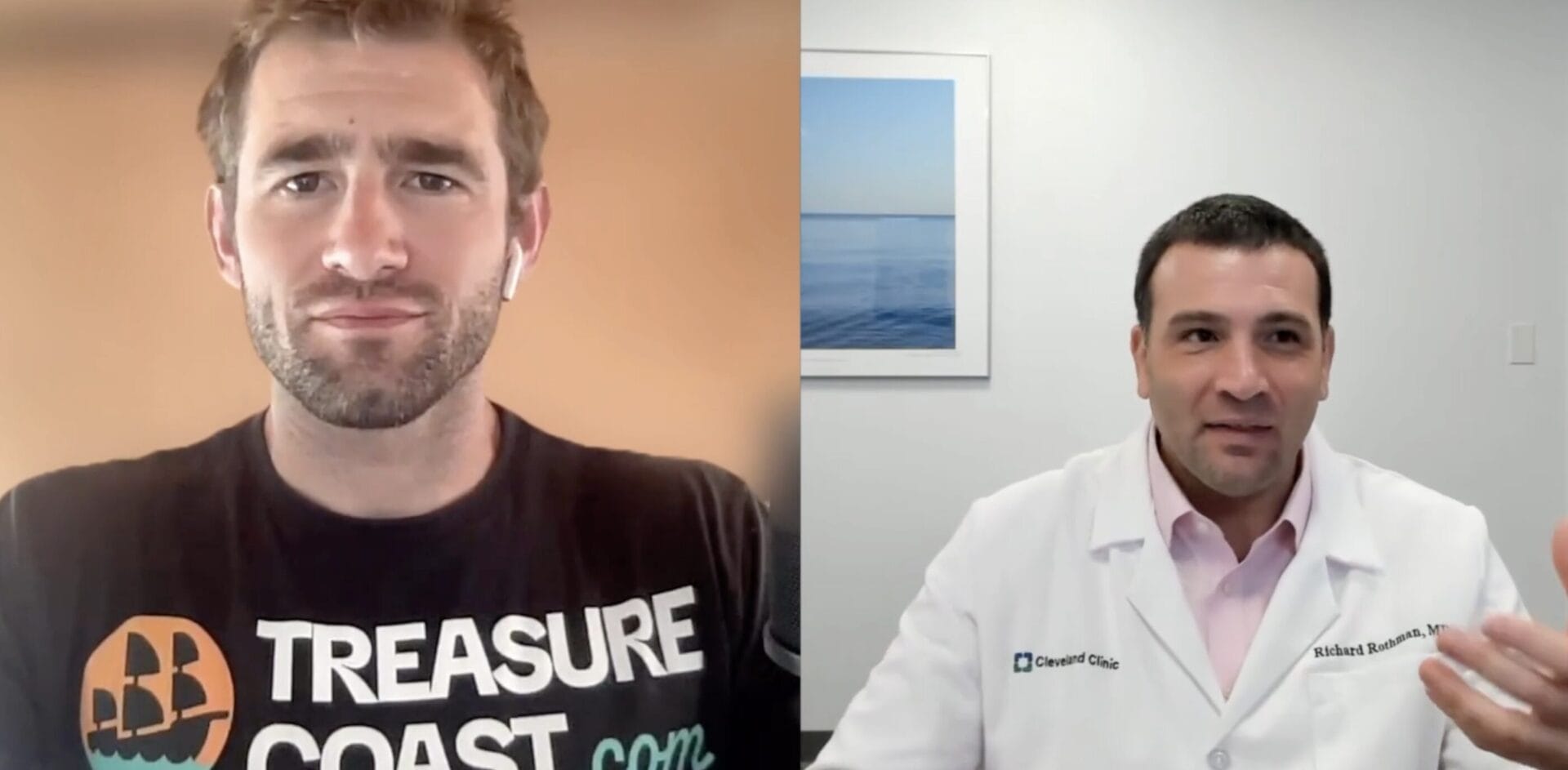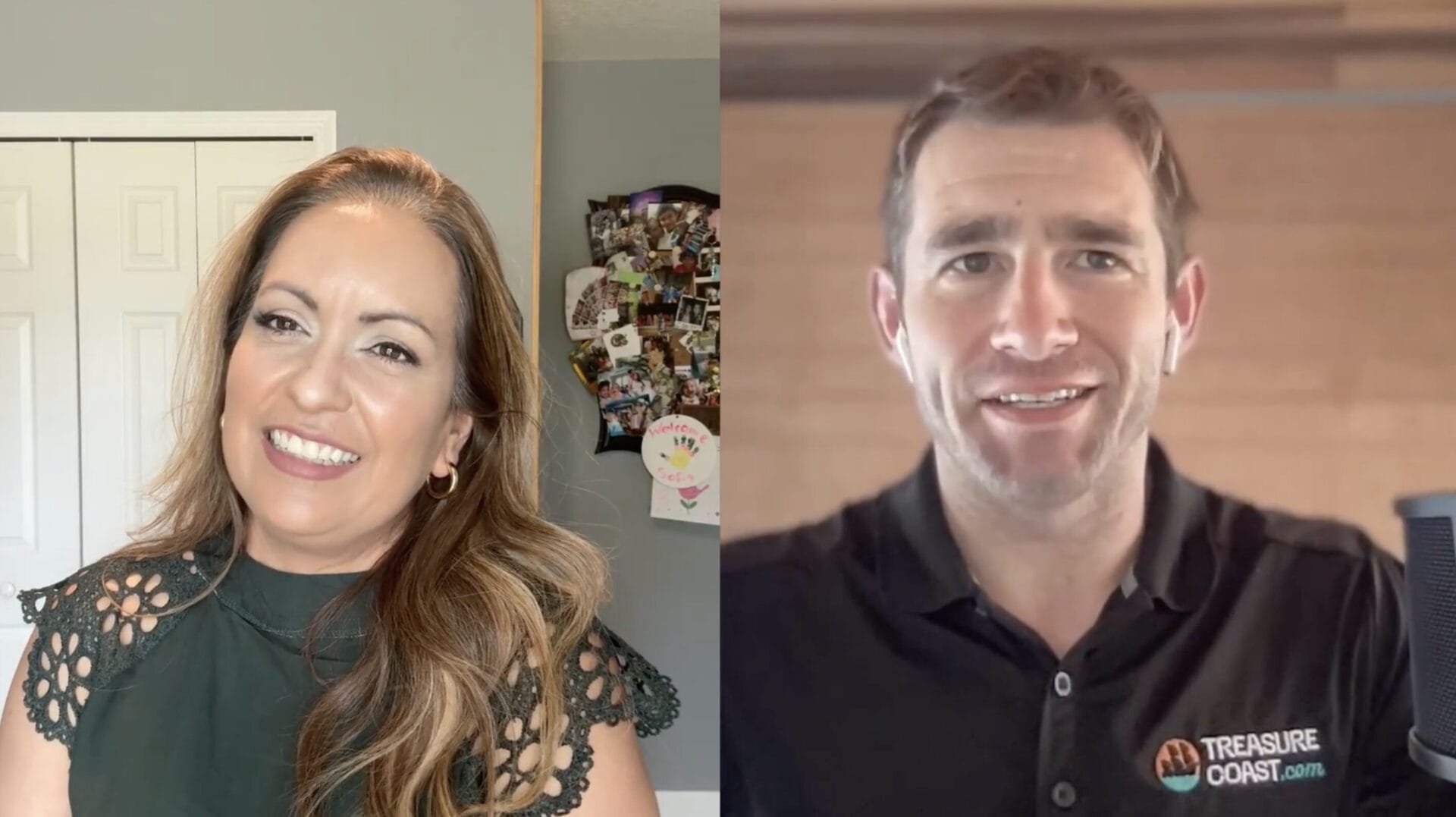In this episode of The Current by TreasureCoast.com, Martin County Commissioner Blake Capps shares his perspective as a newly elected representative on growth, conservation, and much more. Capps, a long-time resident of Hobe Sound, is familiar with Martin County’s history and challenges. From his family business to raising children here, Capps brings his perspective to the decisions shaping Martin County’s future.
The Uniqueness of Martin County
Capps emphasizes what makes Martin County unique. The county’s four-story building height limit, established in the 1982 comprehensive plan, is a striking example. Drive over the bridges to Hutchinson Island, and the difference is clear.
You see two and three-story structures in Martin County compared to the high-rises in St. Lucie County. That limit, along with strict wetland protection rules and the urban services boundary, has kept Martin County distinct. This especially true when compared with counties further south.
The Urban Services Boundary
The urban services boundary (USB) is a major policy that restricts urban services, like sewer and water, to the eastern, more developed part of the county.
Beyond the line, it’s mostly large-lot agricultural land, and building on it comes with strict requirements – usually 20-acre minimums. Capps explains that while the USB could eventually shift, current studies show no need to expand it anytime soon. This line protects western Martin County from the sprawl seen in neighboring areas and larger cities all over the state.
Conservation & Preservation Policies
Commissioner Capps also breaks down Martin County’s wetland and upland preservation policies. Unlike other counties, Martin does not allow developers to fill in wetlands and “mitigate” elsewhere. Instead, they would need to build around wetlands, preserving the natural ecosystems critical for wildlife.
Additionally, 25% of the native upland habitat must be preserved on a development site. Commissioner Capps calls these protections part of what makes Martin County special, a unique piece of Florida worth protecting.
Martin County Forever
Another major topic is the half-cent sales tax, known as Martin County Forever, which passed with 64% of the vote in 2024. Capps calls it a powerful tool for conservation.
The tax is expected to generate $220 million over ten years, with a goal of matching that through state programs like Florida Forever. The funds will be used to purchase conservation lands in key areas like PalMar and western Hobe Sound, with the hope of creating green corridors that connect places like Jonathan Dickinson and Atlantic Ridge State Parks.

Capps highlights PalMar as a critical target, an area full of small, fragmented parcels that were sold off decades ago in a speculative land boom. Buying up those parcels will help restore vital habitats and prevent unwanted development. The land acquisition committee, made up of environmentalists, business leaders, and community members, is already identifying priority properties. Capps sees this as a once-in-a-generation opportunity to protect the landscapes that define Martin County.
Improving Water Quality in Martin County
Beyond land conservation, Capps is focused on water quality. Martin County has a goal of converting 10,000 septic tanks to sewer systems in ten years, and they’re halfway there. Capps explains that old septic systems, especially those near the rivers, leach harmful nutrients into the water. Replacing them with modern sewer systems is key to cleaning up the St. Lucie, Indian, and Loxahatchee Rivers. Projects like Golden Gate, Beau Rivage, and New Monrovia are major wins in this effort, backed by state grants and local support.
The Budget & Final Thoughts
Capps also touches on the budget process, which he describes as a balancing act. The county’s budget is driven by property taxes, but factors like homestead exemptions limit revenue growth, even when property values rise. He points out that nearly half of Martin County properties are homesteaded, capping annual tax increases at 3%. Inflation eats into budgets, and unexpected economic events—like the 2008 recession—can create huge challenges. That’s why careful planning and conservative growth policies are critical.
Throughout the conversation, Commissioner Capps underscores how conservation and smart growth go hand-in-hand. Protecting Martin County’s natural beauty and resources isn’t just an environmental issue—it’s a community value that shapes the county’s identity and quality of life. From the land acquisition strategy to the budget process to the ongoing septic-to-sewer conversions, it’s all connected.






